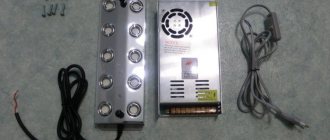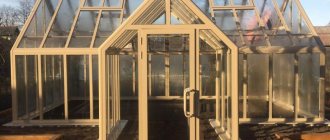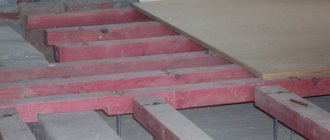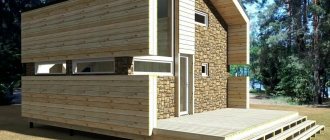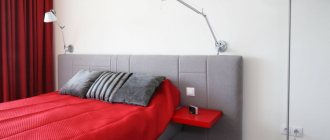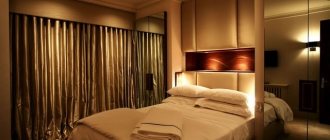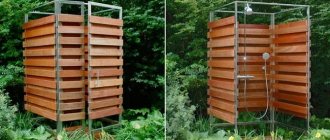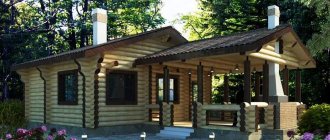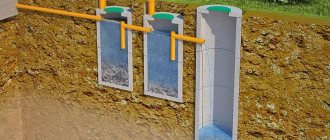Home air humidifiers have long been an excellent means of improving the microclimate in a living space. They have been proven to effectively increase humidity levels during dry periods such as winter.
But owners of appliances often encounter all sorts of problems: either a puddle forms, or the tables become covered with a whitish coating, or along with a new useful “tenant,” a loud noise takes up residence in the house, disturbing sleep.
Many of the troubles can be quickly eliminated by choosing the right place to install the device. In this article, we will give recommendations on where to place the humidifier in the room so that it can better cope with its functions.
Criteria for choosing a location for installation
The choice of location largely depends on the type of humidifier, technical characteristics and features of the model itself. For example, a bulky floor-standing unit cannot be placed on shelves or tables, and a compact decorative device is unlikely to cope with humidifying the air in the hall or living room, wherever it is placed.
First, let’s look at what qualities of a humidifier you need to pay attention to when purchasing it, so that you don’t suddenly encounter unpleasant “surprises.” Each of the listed properties in one way or another affects the choice of installation location, temporary or permanent.
Image gallery
Photo from
#1 – weight and size of devices
#2 – potential degree of humidity
#3 – noise level
#4 – humidifier features
Taking into account the characteristics, they decide where it is better to place a home air humidifier: in a spacious living room or in a small office, on the floor or table, in a corner or in the center of the room, on a bedside table or away from rest areas.
It’s easier if you don’t purchase a device for installation in one permanent location, then you can accurately select the device according to your parameters. A device that often “moves” from place to place must be universal, with adjustable parameters and the ability to be installed on any surface.
We recommend that you familiarize yourself with the best humidifiers for home and apartment that have received recognition and positive reviews from their owners.
Obvious benefits
Humid air helps a person relieve fatigue and fall asleep easily. There is no feeling of dry skin. The mucous membranes of the respiratory tract are moist, which means that the risk of contracting viral diseases is minimal. Young children are particularly sensitive to humidity levels. With its deficiency, the child loses his appetite and becomes sluggish and capricious. Even plants with a lack of moisture have a limp appearance. Therefore, we can definitely say that such a device as a humidifier is necessary in every home, especially in winter.
There are designer models of air humidification devices on the market.
An important feature of many models is aromatherapy; just drop a couple of drops into a reservoir of water and the healing aroma will spread throughout the room. The device will moisturize and at the same time help get rid of excessive anxiety or relieve headaches. In some cases, it will help cure insomnia.
Where is the best place to put a humidifier?
Now let’s “walk” through the entire apartment and find out where an air humidifying device is needed and where it is not. It refers to home appliances that are not purchased for beauty or “to be”, so let’s determine the degree of its usefulness.
Option #1 - kitchen window sill
The device displayed on the window sill in the kitchen is truly surprising. Its appearance in a room where the level of humidity is already sufficient is explained by various reasons - for example, caring for seedlings planted in the spring.
Despite the fact that the kitchen often serves as a dining room and the whole family gathers there, a humidifier is not installed there. Excessive humidity causes the risk of respiratory diseases, swelling of parquet floors and kitchen facades, and the appearance of mold in corners, along baseboards and under wallpaper.
The kitchen is classified as a room with a normal level of humidity, which is maintained through the constant use of water. It doesn’t get too humid there either due to well-established ventilation.
The only exception is spacious kitchens, the area of which is at least 20 m². In them, the humidifier is placed against a wall located away from the “working area” - the sink and stove.
In studio apartments, the kitchen is often part of the common room, so it is served, along with the rest of the area, by one powerful unit.
Option #2 - bedroom or children's room
Separate bedrooms, as well as the children's room, are classified as recreation rooms - rooms in which family members spend the night. Small children often sleep during the day, so special conditions are observed for them.
If a humidifier is installed in the kitchen in rare cases, then for a bedroom or children's room it is simply necessary. A resting body benefits from air with normal humidity: only in comfortable conditions can a person sleep well and recharge with energy for the coming day.
Along with darkness, silence also contributes to good and healthy sleep, so one of the conditions for purchasing a humidifier specifically for the bedroom is a low noise level
Dryness, on the contrary, greatly harms a person, especially when he is in a defenseless state - sleeping. Therefore, buying a humidifier for the bedroom is the right decision.
But at the same time you need to think about the rules for installing the device:
- do not place it too close to the bed, especially a child’s one;
- choose the quietest device with a “night” mode;
- Do not install the device in the middle of the room or in any other place where you can accidentally stumble upon it in the dark.
If the humidifier is intended for the room of a preschool child, it is better to choose an option with a fun design, but you need to install the device out of reach so that the child does not accidentally drop the device or get burned.
Traditional devices or ultrasonic devices from special children's series, made of harmless plastic, with rounded contours and child-friendly controls, are considered safer.
Pay attention to special humidifiers for newborns - low-power and quiet devices with additional filtration and the function of purifying the air from germs and allergens.
But do not forget that ultrasonic devices spray all the impurities in the water into the air. Before placing the device in the nursery, be sure to consult with an experienced pediatrician. We recommend that you familiarize yourself with the pros and cons of using a humidifier in a nursery.
Option #3 - a teenager’s office or room
A study room or office is distinguished by the fact that it is intended for work or study.
If in the office one of the adults usually works with literature or technology, or holds business or friendly meetings, then in the nursery the pupil or student also sleeps, so the requirements for installing a humidifier increase.
Often a library is set up in the office, placing publications in cabinets and on shelves. It is known that high humidity is much more dangerous for paper than dryness.
In addition to books, the office may contain expensive computer equipment, which should also be protected from high humidity. If you want to keep rare publications or a brand new laptop safe, place the humidifier away from cabinets and desks.
A small device is sometimes placed directly on the desk. This is possible if the sprayed moisture does not harm paper products and does not cause constant cleaning. It’s better to use a corner or center of the room that is distant from the workplace.
Option #4 - living room or hall
The living room or spacious hall usually serves as a gathering place for all family members to gather and relax together. As a rule, this is one of the largest rooms, well heated and therefore requires additional humidification.
According to statistics, most humidifiers are purchased specifically for a common room. There is a lot of free space and there are several options for successful installation
The location is selected after first studying the manufacturer’s recommendations. Floor-standing units are installed exclusively on the floor, having prepared a solid and level base. Decorative compact devices can be placed on a coffee table in the middle of the room, on a windowsill with the sprayer directed towards the center, or on a cabinet shelf, making sure that the “fog” does not damage the furniture.
If the unit is too productive, then at maximum mode a puddle may form around it. Excess moisture is dangerous for carpet, laminate or parquet, but is absolutely harmless for linoleum or tiles.
If you decide to place the device near the sofa, make sure that it does not disturb vacationers and does not spray water towards the upholstered furniture
Remember that both natural wood and particle boards swell from high humidity and then shrink if constant moisture is suddenly stopped.
If the room has expensive parquet or furniture made of valuable wood, we recommend that you consult with specialists before purchasing the unit.
Option #5 - greenhouse or winter garden
When buying a humidifier specifically for indoor plants, start by selecting the device by type. This is one of the rare cases when traditional and ultrasonic devices are less suitable, and preference is given to a steam unit.
A steam humidifier creates a humid microclimate more quickly than others due to the rapid evaporation of water, while the high temperature of the heated device does not disturb the plants, but acts to their benefit
If you decide to install the device on a loggia turned into a winter garden, or simply in a room with a lot of house flowers, think about the placement of both the device and the plants.
Try to keep moisture-loving plants close to the humidifier, and place the rest around the perimeter. Some species do not tolerate constant moisture on the leaves, so you need a device with regulation.
Wherever the humidifier is placed, good ventilation is required. Stagnation of heavy, humid air can lead to rotting of parts of some crops, especially in tight spaces.
Terms of use
Any equipment requires maintenance and care, a humidifier is no exception.
In order for the device to serve for a long time, you should adhere to a number of rules of use:
- Once every 2-3 days, the tank should be cleaned and all water drained.
- When emptying the reservoir and before filling it with water, you should also rinse the container and clean the humidifier itself.
- It is recommended to use purified water; this will protect not only the device, but also the furniture from white plaque.
- If the model is steam, then the heater should be descaled periodically.
- If the device has filters, they should be cleaned and replaced as they wear out. The frequency of replacement is specified in the instructions, but may vary depending on operating conditions.
- The humidifier cannot be washed with chemicals, as the residue will evaporate along with the water during subsequent use.
- After washing, wipe dry with a clean cloth and then start using it again.
- If the humidifier will not be used for some time. It should be emptied and washed, and then put away for storage. Leaving the device with water for a long period of time and not turning it on is prohibited.
The most unsuitable areas for installation
Now let’s look at where you don’t need to install a humidifier.
Rooms that do not require either constant or interval humidification include the following:
- bathroom;
- toilet;
- combined bathroom;
- corridor;
- hallway;
- wardrobe.
In the bathroom and toilet, humidity is always at a high level, so for these rooms it is more important to think through the ventilation system, the same applies to the combined bathroom.
The exception is a small decorative ultrasonic device with an aromatherapy function, which is turned on only during bathing or spa treatments. It can replace scented candles or bath oil
In the dressing room, excess moisture will only cause harm, especially to items of clothing made from natural fabrics and fur.
And in the corridor or hallway, a humidifier will be superfluous, since they already communicate with adjacent rooms. Moreover, in tight spaces, every centimeter of free space is important, so an additional device will do more harm than good.
In the office
If you work in a cubicle or open office and the indoor air is very dry, you don't need a large humidifier. The best solution is a portable humidifier for travel. It can be powered via a USB connector.
This type of humidifier is not powerful enough to add moisture to an entire office, but if you keep it close to you, it will make the air in your immediate area more comfortable.
Found a violation? Report content
General rules for choosing a location
It is important to choose the installation location correctly so as not to harm people or surrounding objects. The functionality of the device itself depends on this - if used carelessly, it can suffer, lose its qualities, or simply stop working.
A correctly installed humidifier performs its task to the maximum: it maintains an optimal level of humidity in the room, does not bother residents with loud noise and lasts for the period specified by the manufacturer
There are several requirements that can be applied to site selection for all types of humidifiers:
- The place must be firm and level. You cannot place the device on a sofa or bed, or on an inclined surface - it must be strictly horizontal.
- Do not move the device while it is turned on. First you need to press the off button, remove the plug from the socket, and only then move the humidifier to another place.
- Do not direct the spray from the sprayer towards furniture or other appliances. They will regularly get wet, and as a result they will lose their attractiveness or fail.
- Try to install even quiet appliances away from beds or sofas - noise increases nervousness and fatigue, and interferes with proper rest.
- Floor-standing models are placed on the floor, others - at a height of 0.5 to 1.5 m. More precise coordinates can be found in the manufacturer's instructions.
- It is better to place potentially dangerous devices in areas inaccessible to small children. Steam humidifiers can become very hot. It is not recommended to inhale the mist of ultrasonic devices at close range.
- Humidifiers lose effectiveness if they are placed near heating elements or open flames - radiators, heaters, fireplaces or stoves - as the moisture dries out immediately.
Do not install the device in places convenient for movement: you may accidentally hit and break a device standing on the road.
If you decide to install a household humidifier in a corner or next to furniture, make sure that the surrounding surfaces will not be affected by the sprayed moisture.
And if there are active animals in the house, try to protect equipment from these energetic and curious pets.
In addition to choosing the optimal location for placing the device, it is equally important to operate it correctly and maintain it in a timely manner, cleaning it from scale and mold.
In the children's room
Using a humidifier in your children's room can be a very effective and easy way to protect them from the negative effects of very dry air.
You should always keep the humidifier away so that your baby cannot reach the device. You can place it on your nightstand or dresser, or if you have carpet, cut a piece of cardboard from the box and place it under your humidifier.
What happens if the water runs out
It is highly undesirable to ignore the humidifier's signals that the water is running low. Operating the device dry may result in malfunction.
This is due to the presence in the design of a special element - an evaporator, which can convert water into low-disperse cold steam. If the evaporator does not have contact with moisture during spot heating, it will begin to heat itself - eventually the element will simply burn out.
Rating
To make it easier for you to navigate among the offers, take a look at these different types of humidifiers. All of them have earned positive customer reviews. Pay special attention to this ultrasonic humidifier.
- Scarlett SC-AH986E08
Suitable for apartments up to 30 sq.m. m. Thanks to the removable 4.6 liter tank, you won't have to add fluid too often. Equipped with three modes and operates without interruption for 15 hours. Adjustable steam intensity and a capsule for aroma oils will help create the ideal microclimate. If there is no liquid or an uninstalled container, it will not turn on.
Cost – 4,000 rubles.
5 more popular models:
- Zanussi ZH 3 Pebble White for RUB 3,990.
- Marta MT-2688 for 2,690 rubles.
- Electrolux EHU-3315D for RUB 5,990.
- Redmond RHF-3316 for 6,790 rubles.
- Electrolux EHU-3310D for RUB 5,990.
Reservoir and continuous operation time
Everything is obvious here: the larger the container, the less often it will have to be filled, which means the equipment can work longer without your participation. There are containers that hold from 3 to 6 liters.
However, large containers are inconvenient because the device itself becomes too bulky and takes up a lot of space. And this is unacceptable for small apartments.
The time of continuous activity is a very conditional concept, since it depends on several factors: spray intensity, initial humidity, and the aforementioned tank volume. We can only say that manufacturers indicate in the specifications values on average from 10 to 18 hours. After this period, the device should be turned off for refueling and rest.
Precautionary measures
To ensure safe operation of the device, there are certain precautions during operation. These measures are carried out directly by the owner. But the device itself is also additionally equipped with protective devices.
Hygrometer
A hygrometer is an indoor humidity sensor. That is, when the humidifier operates, a microclimate with certain parameters is created. If the comfortable parameters are exceeded, the hygrometer gives a command to the device mechanism, and its operation slows down. This protects the humidifier from rapid moisture consumption and possible operation with an empty tank.
Timer
If the owner himself controls the operation of the device and knows what humidity parameters he needs, then using a timer he can independently set the temporary operating modes of the humidifier. In addition, many models are equipped with digital touch panels with a choice of humidification intensity mode.
Using a humidifier at home does not require special knowledge, however, even in this case, it is necessary to follow some precautions. Operation is prohibited if:
- The reservoir is leaking.
- The humidifier housing is damaged.
- There are traces of destruction of the polymer insulator on the electrical cable.
- Warm steam is supplied.
- There is severe contamination of the tank walls or other structural elements.
Violation of these prohibitions will lead not only to rapid failure, but also to possible burnout of the electrical component of the device.
Do you need prepared purified water or can it be poured from the tap?
Water, which is eventually used for humidifiers, is divided into 3 types:
- Tap water is tap water purified only from toxic elements.
- Distilled - additionally purified from impurities.
- Demineralized - also purified from carbonate salts, then “soft” water.
How do you know if water is not suitable for a humidifier? First of all, after use, you should inspect the tank; if it is covered with a layer of dirty deposits, then the water has a large number of impurities and is not suitable for use.
Other signs of unsuitable water are identified by the following manifestations:
- The remaining water in the tank has become cloudy or darkened.
- The reservoir and dryer elements have become a source of unpleasant odor.
- A greenish coating appeared on the structural elements and walls of the tank.
In order to prevent these negative manifestations, we recommend using distilled or demineralized water. If it is not possible to purchase water with these parameters, then you can prepare the liquid by first boiling it and letting it sit.
| Important! As a rule, the filters installed in the humidifier cope with most impurities, preventing them from reaching the evaporator. But we are talking about large, not molecular elements. |
What air humidity is considered comfortable?
Normal air humidity is the key to comfort and health safety. Humidity is considered comfortable for people - 40-70%; for plants: — 50-75%; for interior items and equipment, papers and books - 40-60%. Humidity indicators are standardized and differ for different types of rooms: Living room: 40-60%
Interesting materials:
Is it possible to open a sick leave in one city and close it in another? Is it possible to open an individual entrepreneur without a cash register? Is it possible to open an individual entrepreneur for an officially employed person? Is it possible to open an individual entrepreneur at the place of residence? Is it possible to open a plastic window from the outside? Is it possible to open a current account at a location other than the place where the individual entrepreneur is registered? Is it possible to open a bank account in the Russian Federation from Kazakhstan? Is it possible to open a special account online? Is it possible to open Viber on two phones? Is it possible to open a bank account for two people?
Secondary functions
To make operation convenient and safe, manufacturers equip devices with the following options:
- night mode – in order not to interfere with your rest, one click reduces noise and dims the backlight brightness;
- shutdown timer – useful for setting the time after which you want the device to turn off;
- sound signal – serves as an additional indicator to notify the user about the state of the unit;
- shutdown in the absence of water - as soon as the liquid in the tank runs out, the activity automatically stops. This will protect the device from damage and the apartment from fire;
- shutdown when removing the tank - does not allow you to start work if a container with water is not installed.
For correct operation, distilled or purified water should be poured into the equipment. This will extend its service life and delay the time of filter replacement. But it is not always possible or willing to provide the unit with such a liquid, so manufacturers come up with various systems for purifying water from impurities and bacteria:
- filters (purification of water, outgoing steam, for softening) - normalize the characteristics of the liquid so that the output is practically sterile steam, which will not cause harm to health and will not leave a white coating on the furniture;
- “warm steam” mode – water is heated to a temperature of 40 – 80 ℃. This is necessary to “kill” microorganisms and purify the air. Some devices provide this order: the liquid inside heats up, but you can set it so that the steam at the outlet is still cold;
- ultraviolet cleaning - radiation is guaranteed to remove pathogenic organisms, preventing them from entering the room;
- Anti-scale protection system – facilitates the maintenance of the device and protects internal parts from the appearance of lime deposits.
The presence of all these resources, however, does not eliminate the need for constant maintenance of the humidifier: cleaning, replacing filters and membranes.
